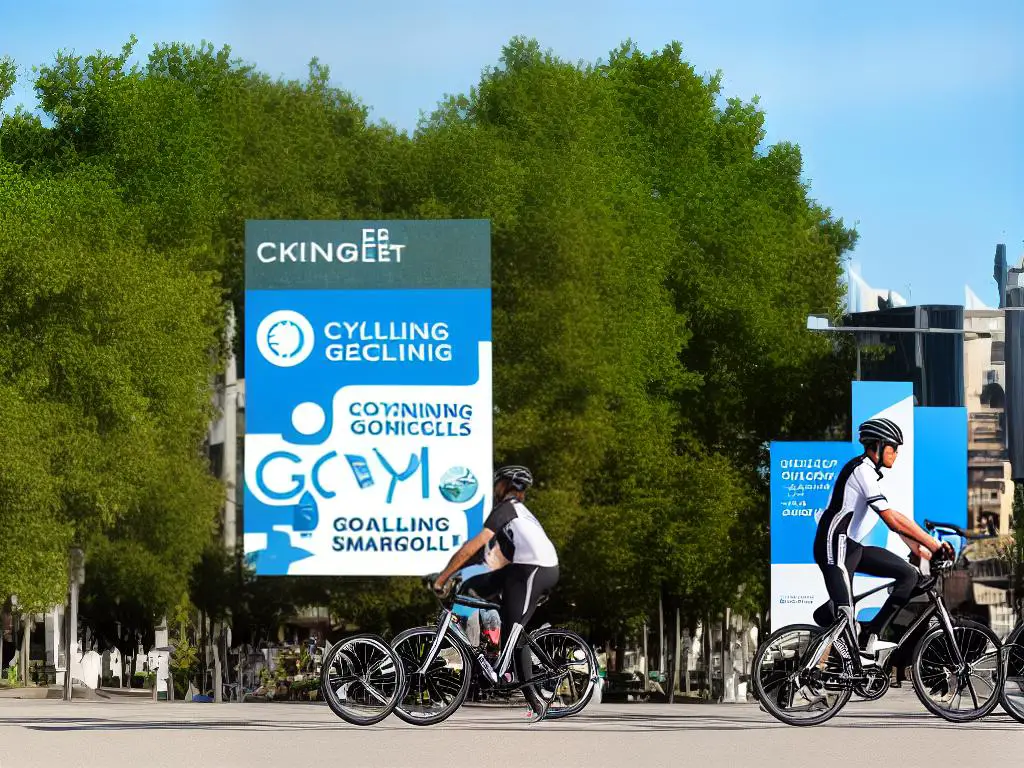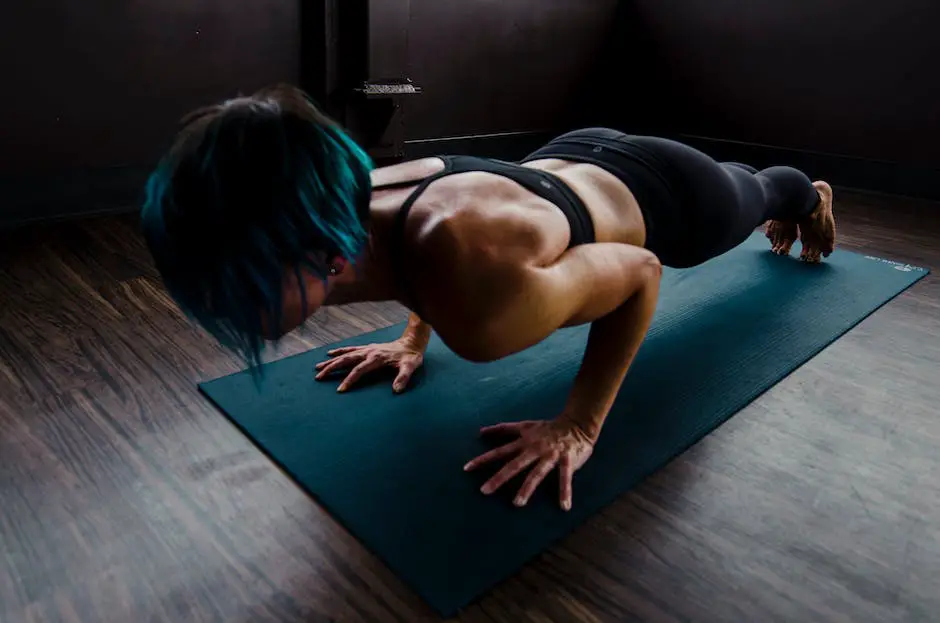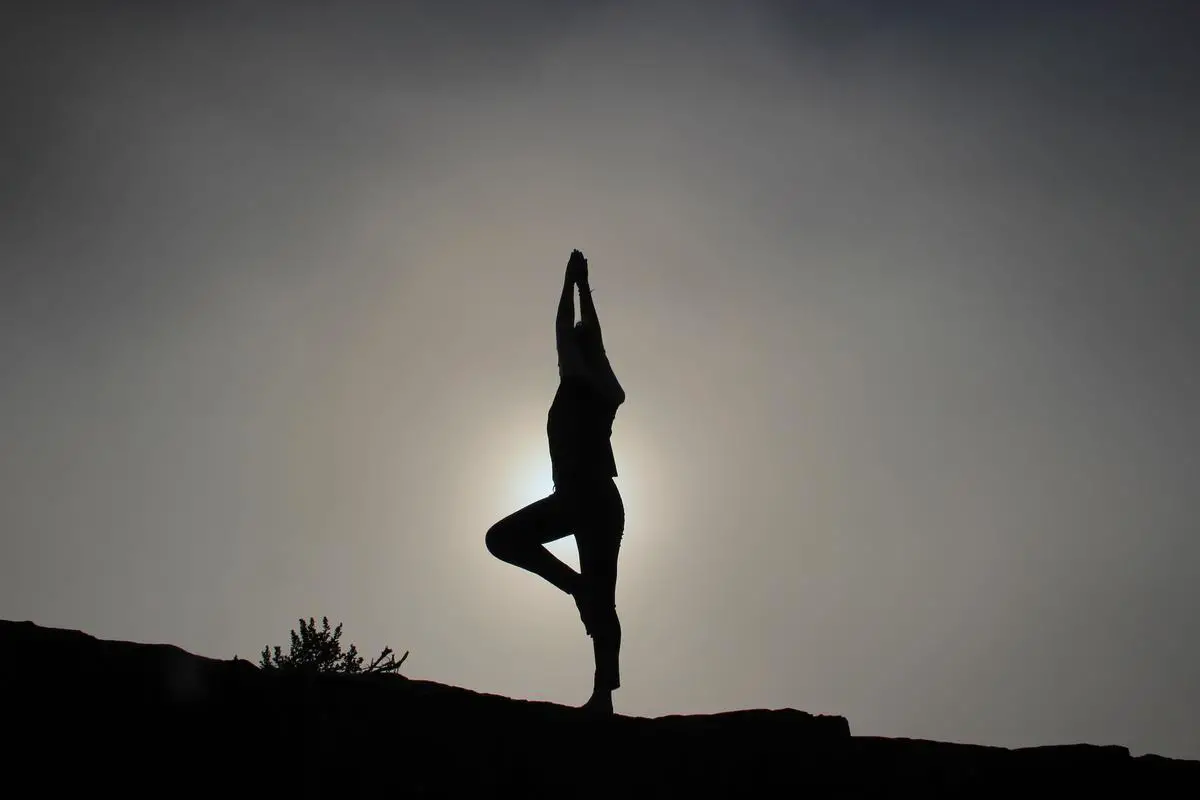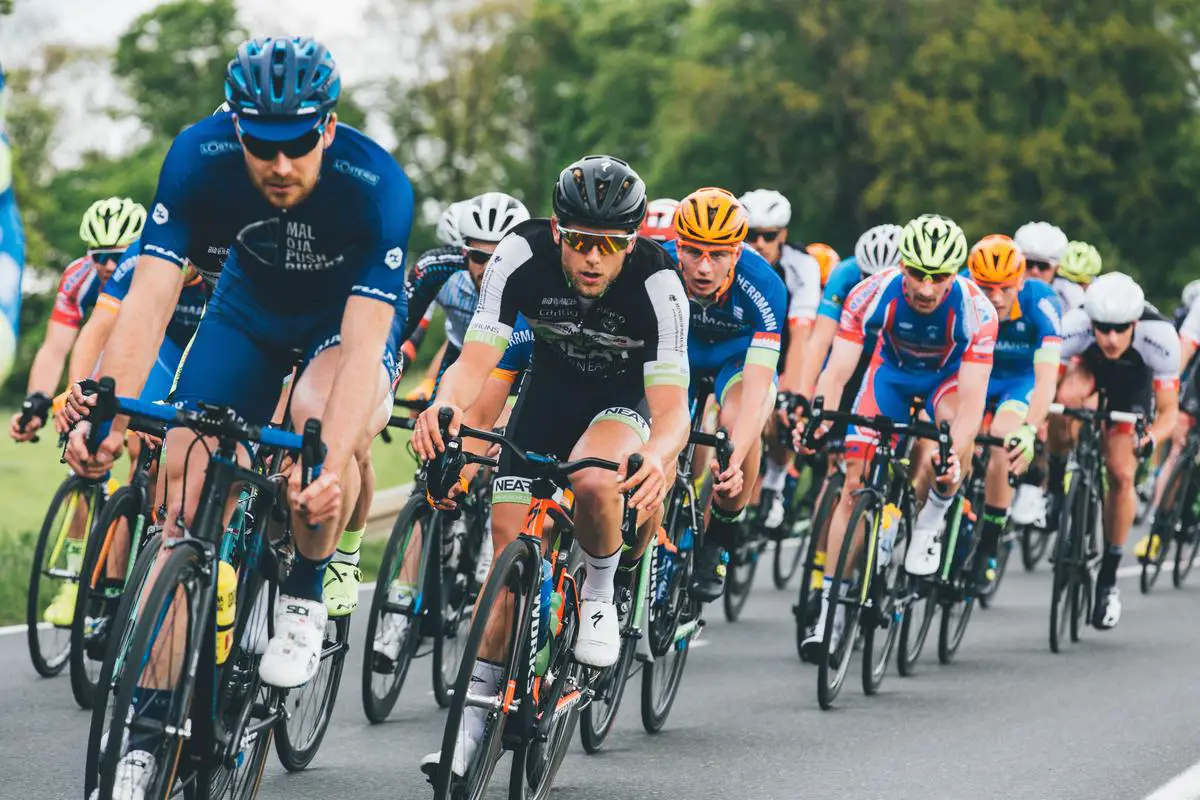Setting Cycling Goals After a Break: A Comprehensive Guide
Returning to cycling after a break can be both exciting and challenging, as you look to rebuild your fitness and achieve new goals. Whether you are bouncing back from an injury or simply getting back in the saddle after an extended hiatus, a well-structured plan can pave the way for a successful and enjoyable comeback. This article covers various aspects to consider in your journey, from assessing your fitness level to developing a training plan, and from understanding the importance of nutrition and hydration to embracing cross-training activities and joining a cycling club for motivation and support.
Assessing Fitness Level
Setting cycling goals after a break is essential for getting back into a consistent routine and improving overall fitness. To set appropriate goals, you first need to assess your current fitness level. Follow these steps to assess your fitness level and get back to cycling with a purpose:
- Consult a professional: If you’re unsure about your current fitness level or how to assess it, consider consulting a personal trainer, fitness coach, or a professional cyclist. They can provide guidance and help you design a customized training plan.
- Record your baseline measurements: To track your progress effectively, it’s essential to know your starting point. Take measurements such as your weight, body fat percentage, and heart rate. Additionally, measure your bike’s fit to ensure that it’s properly adjusted for your comfort and efficiency during rides.
- Test your aerobic capacity: Assessing your cardiovascular fitness is crucial for cycling. Perform a simple test such as the 12-minute Cooper test, which requires you to ride as far as possible in 12 minutes. Make a note of the distance covered, as this will serve as a benchmark to track your progress.
- Determine your anaerobic threshold: To assess your anaerobic fitness, try performing an FTP (Functional Threshold Power) test. This test involves riding at maximum effort for a specific duration, usually 20 minutes, to measure the amount of power you can sustain. Record your average power output in watts as a baseline measurement.
- Evaluate your muscular endurance: While cycling primarily requires cardiovascular fitness, muscular endurance is also essential, particularly for climbing hills. Perform a test such as a timed wall sit or a maximum number of squats in one minute to gauge your lower body strength.
- Check your flexibility: Flexibility plays a vital role in preventing injuries and improving cycling performance. Try performing stretching exercises, such as hamstring stretches, quad stretches, and hip flexor stretches, to assess your flexibility.
- Set realistic goals: Once you’ve assessed your current fitness level, it’s time to set realistic goals to help guide your training. Consider factors such as the desired frequency of your rides, improvements in aerobic capacity and muscular endurance, target power output, and overall fitness.
- Develop a training plan: With your fitness assessment complete and goals in place, create a training plan tailored to your needs. Incorporate a mix of aerobic and anaerobic workouts, strength training, core exercises, and flexibility exercises. Include rest days and cross-training activities to maintain balance and prevent burnout.
- Monitor your progress: Regularly re-assess your fitness level to track your improvement and adjust your goals and training plan accordingly. Keep a fitness journal or use a tracking app to log your workouts, distances, average power output, and other relevant information.
Remember to stay patient and give yourself time to readjust to a regular cycling routine. Celebrate small achievements along the way and enjoy the process of setting cycling goals after a break.

Goal Setting Principles
Title: Goal Setting Principles for Cyclists: Using SMART Goals to Get Back on Track
Whether you’re just getting back into cycling after a break or you’re a seasoned rider looking to push yourself to new levels, setting goals is an essential part of the process. To make your goals effective and achievable, follow the SMART goal-setting principles (Specific, Measurable, Achievable, Relevant, Time-bound). This guide will provide you with step-by-step instructions on how to create SMART cycling goals.
Step 1: Make Your Goals Specific
To create a specific goal, begin by asking yourself what you want to accomplish and why it’s important to you. Instead of general goals like ‘improve my cycling,’ aim for something more precise, such as ‘increase my average speed by 2 mph’ or ‘be able to complete a 50-mile ride.’ The more specific your goal, the better equipped you’ll be to make a plan and measure your progress.
Step 2: Ensure Your Goals Are Measurable
To track your progress and determine whether you’re on course to achieve your goal, make sure it’s measurable. This means setting a clear target that can be quantified. For example, instead of saying ‘I want to get faster at cycling,’ make your goal measurable by stating, ‘I want to reduce my 20-mile ride time by 15 minutes.’ This way, you’ll know exactly what you need to achieve and can easily measure your progress.
Step 3: Choose Achievable Goals
While it’s great to dream big, it’s important that your goals are achievable based on your current fitness level, experience, and available resources. A goal that’s too challenging or requires a commitment that’s not realistic can lead to disappointment and a lack of motivation. Assess your current abilities and choose a goal that’s challenging but possible to attain. For example, if you’re just getting back into cycling after a long break, aiming to complete a century ride (100 miles) within a month might not be achievable. However, a goal to complete a 30-mile ride in that same time frame might be more realistic.
Step 4: Set Relevant Goals
For your cycling goals to be effective, they should be relevant to your overall ambitions, needs, and interests. Ask yourself why this goal is important to you and how it contributes to your broader objectives. If you’re setting a goal to improve your cycling speed, consider how it’s relevant to your desire to participate in a race or improve your overall fitness. By associating your goals with your personal values and long-term objectives, you’re more likely to remain committed and motivated.
Step 5: Create Time-bound Goals
Last, ensure that your goals are time-bound by setting a clear deadline for when you want to achieve them. This provides you with a sense of urgency and helps keep you focused on your progress. For example, if you want to complete a 50-mile ride, set a specific date by which you plan to achieve this. You can also break down larger goals into smaller, more manageable milestones with their own deadlines – for instance, increasing your weekly mileage by 10% over six weeks.
Conclusion
By following the SMART goal-setting principles, you’ll be better equipped to create effective and realistic cycling goals, regardless of your current skill level or experience. As you work towards your specific, measurable, achievable, relevant, and time-bound goals, remember to monitor your progress, celebrate your achievements, and adjust your plans as needed along the way. With dedication and persistence, you can make significant strides in your cycling journey – and enjoy the ride.

Developing a Training Plan
Title: Developing a Training Plan for Cycling After a Break
Introduction: Getting back into cycling after a break can be exciting but challenging at the same time. With a well-structured and gradual training plan, you can increase your fitness levels and achieve your cycling goals. This guide will walk you through the steps to create a training plan that includes frequency, duration, and intensity to help you get back on track.
Step 1: Assess Your Current Fitness Level
Before jumping back into a training program, it’s important to assess your current fitness level. Start with a gentle ride to see how your body feels and gauge your endurance. Make a note of the distance and speed you were able to maintain and use this information to set a baseline for your training plan.
Step 2: Set Specific, Realistic Goals
Establish clear, achievable goals for your cycling training. These could include increasing your weekly mileage, participating in a local race, or achieving a specific speed or pace. Make sure your goals are specific, measurable, and realistic, given your current fitness level and the amount of time you have to train.
Step 3: Determine Frequency, Duration, and Intensity
Your training plan should include a mix of low-intensity, moderate-intensity, and high-intensity rides to ensure a well-rounded program:
- Frequency: Aim to cycle at least three to four times per week, with one or two rest days in between sessions for recovery.
- Duration: Start with shorter rides (30 minutes to an hour) and gradually increase your ride duration as your fitness improves. Aim for at least one longer ride per week.
- Intensity: Mix up the intensity of your rides, including low-intensity steady-state (LISS) rides for endurance, moderate-intensity sessions for general fitness, and high-intensity interval training (HIIT) sessions for speed and power improvements.
Step 4: Create a Weekly Training Schedule
Using your goals and the frequency, duration, and intensity guidelines, create a weekly training schedule. Make sure to include a variety of workouts, like hill climbs, intervals, and steady-paced rides, to challenge different aspects of your fitness. Keep a record of your progress by tracking your rides using a cycling app, GPS watch, or a training journal.
Sample Week Training Schedule:
- Monday: Moderate-intensity 45-minute ride
- Tuesday: High-intensity interval training, 30 minutes
- Wednesday: Rest day
- Thursday: Low-intensity 60-minute ride
- Friday: Rest day or cross-training (e.g., swimming, strength training)
- Saturday: Moderate-intensity 90-minute ride with hill climbs
- Sunday: Low-intensity 45-minute recovery ride
Step 5: Monitor Your Progress and Adjust Your Plan
Periodically review your training plan and progress. If you’re not achieving your goals or find that the workouts are too difficult or too easy, adjust the plan accordingly. Make sure to listen to your body and allow for adequate recovery time.
Step 6: Stay Motivated and Enjoy the Journey
A successful training plan is only as good as your commitment to it. Stay motivated by setting smaller, short-term milestones, joining a local cycling group, or signing up for a local race. Remember to enjoy your time on the bike and watch as your fitness levels increase steadily.
Conclusion:
With a structured training plan that encompasses frequency, duration, and intensity, you can gradually increase your cycling fitness and achieve your goals after a break. Assess your fitness level, set specific goals, and create a weekly training schedule that challenges your body and helps you progress. Monitor your progress, adjust your plan as needed, and, most importantly, enjoy your journey back into cycling.

Nutrition and Hydration
Title: Nutrition and Hydration for Cyclists Returning after a Break
Introduction:
Whether you’re getting back into cycling after a break or just starting out, setting achievable goals is crucial to keep up the motivation. However, nutrition and hydration are equally important to support your training, recovery, and overall performance. In this guide, we’ll discuss the significance of proper nutrition and hydration for cyclists and provide tips to help you fuel your body correctly.
1. Importance of Nutrition and Hydration:
- Enhances training and recovery: Proper nutrition and hydration help the body recover from intense workouts, allowing you to gain strength and endurance.
- Reduces fatigue: Adequate nutrient intake can help prevent tiredness, allowing you to train harder and achieve better performance.
- Improves overall health: A well-balanced diet can support overall health by providing essential nutrients and reducing the risk of illness.
2. Macronutrients for Cyclists:
- Carbohydrates: The primary fuel source for cycling, especially during high-intensity workouts. Sources include whole grains, fruits, and vegetables.
- Proteins: Essential for muscle repair and growth. Opt for lean proteins like chicken, turkey, fish, tofu, and beans.
- Fats: Necessary for overall health, hormone production, and energy supply during low-intensity workouts. Favor healthy fats like avocados, nuts, seeds, and olive oil.
3. Nutrition Timing:
- Pre-ride: Have a meal 2-3 hours before your ride, focusing on carbohydrates with some protein and fat. If necessary, have a small snack 30-60 minutes before riding, such as a banana or energy bar.
- During the ride: For rides longer than 90 minutes, consume 30-60 grams of carbohydrates per hour. Options include sports drinks, energy gels, or bars.
- Post-ride: Refuel within 30-60 minutes with a meal containing a 3:1 carbohydrate-to-protein ratio. This will replenish glycogen stores and support muscle recovery.
4. Hydration:
- Start your ride well-hydrated by drinking water regularly throughout the day.
- Drink 16-24 ounces of water or a sports drink 2-3 hours before your ride, and another 8-10 ounces 20-30 minutes before.
- Aim to drink 16-32 ounces of fluid per hour during your ride, depending on personal sweat rate and weather conditions.
- Following your ride, rehydrate with 16-24 ounces of water or a sports drink for every pound lost during the ride.
5. Special Considerations:
- Electrolytes: To maintain electrolyte balance during long or intense rides, consume sports drinks with sodium and potassium.
- Supplements: Consult with a professional before adding supplements to your diet, as they may not be necessary with a balanced diet.
Conclusion:
Understanding the importance of proper nutrition and hydration will support your training and recovery as you work towards your cycling goals. Make sure to consume a well-balanced diet, hydrate effectively, and pay attention to your body’s signals to optimize your performance and overall health. Happy cycling!

Injury Prevention and Recovery
Setting Cycling Goals After a Break and Injury Prevention and Recovery
Taking a break from cycling can be due to various reasons such as personal commitments, illness, or injury. It is essential to set appropriate goals and take a systematic approach when returning to cycling. This guide will cover common cycling injuries, prevention strategies, and recovery techniques to ensure a safe and effective return to cycling.
Assessing your current fitness level:
Before setting cycling goals, it is important to assess your current fitness level. You can do this by performing a self-assessment, consulting with a healthcare professional, or getting a fitness test done by a certified coach. Knowing your current fitness level will help you create realistic goals and avoid potential injuries.
Setting realistic goals:
When returning to cycling after a break, it is crucial to set achievable and realistic goals based on your fitness level. Initially, focus on regaining your cycling fitness and gradually increase the intensity and duration of your rides. Break your goals into smaller milestones to stay motivated and track your progress.
Adopt a gradual approach:
A sudden return to intense cycling can lead to injuries or setbacks. Start with low-intensity rides for shorter durations and gradually increase your ride duration and intensity over a few weeks. This will help your body adapt to the physical demands of cycling and reduce the risk of injuries.
Injury Prevention:
-
Warm-up and cool-down: Always perform a warm-up before starting your cycling session to prepare your muscles and joints for the activity. Similarly, cooling down after a ride helps to promote recovery and prevents muscle soreness.
-
Strengthening workouts: Incorporate strength training exercises into your routine to improve your overall fitness and reduce the risk of injuries. Focus on exercises that target your core, glutes, and leg muscles as these are the primary muscles used in cycling.
-
Flexibility exercises: Cycling can lead to tight, shortened muscles, which may increase the risk of injury. Incorporate flexibility exercises, such as yoga or static stretching, into your routine to maintain and improve your flexibility.
-
Proper cycling technique: Ensure you have the correct cycling form and technique to reduce the risk of injury. This includes proper body alignment, pedaling technique, and bike handling skills.
-
Bike fit: A properly fitted bike can make a significant difference in reducing the risk of injury. Consult a professional bike fitter to ensure that your bike is adjusted to suit your body and riding style.
Recovery Techniques:
-
Rest: Giving your body adequate rest is crucial for injury prevention and recovery. Plan rest days into your training schedule and listen to your body when it needs time to recover.
-
Nutrition: Eating a balanced diet that includes carbohydrates, proteins, and healthy fats will help to fuel your cycling workouts and promote recovery. Stay hydrated before, during, and after your rides for optimal performance and recovery.
-
Massage and foam rolling: These techniques help to release muscle tension and promote recovery. Incorporate self-massage or foam rolling targeted at your tight or sore muscles.
-
Ice and heat therapy: Ice can be used to reduce inflammation and pain in acute injuries, while heat therapy can be helpful in relaxing tight or sore muscles.
-
Seek professional help: If you experience persistent pain or discomfort after cycling, consult a healthcare professional, such as a physical therapist or sports medicine physician. They can help diagnose and treat potential injury and provide guidance on safe and effective recovery.
In Conclusion:
Incorporating injury prevention strategies, setting realistic cycling goals, and following a gradual, systematic approach when returning to cycling can help you stay safe and enjoy your rides. Remember to listen to your body and consult a healthcare professional if you experience any concerns related to your cycling activities.

Cross-Training Activities
Title: Cross-Training Activities for Cyclists: Boost Your Performance and Prevent Injuries
Introduction:
Cross-training is a vital aspect of any fitness program, particularly for cyclists. Incorporating various exercises into your cycling routine not only improves your physical performance on the bike but also reduces the risk of injuries. This guide will explain the benefits of cross-training for cyclists, outline various activities you can integrate into your routine, and provide tips on setting cycling goals after a break.
Benefits of Cross-Training Activities for Cyclists:
- Improved muscular balance: Focusing solely on cycling can lead to muscle imbalances and overuse injuries. Cross-training activities strengthen neglected muscles, promoting muscular balance and reducing the risk of injury.
- Increased overall fitness: Engaging in different types of exercises helps improve your cardiovascular and muscular fitness, translating to greater efficiency and endurance on the bike.
- Enhanced flexibility: Incorporating stretching and flexibility exercises into your routine can help improve your range of motion, decrease muscle soreness, and reduce the risk of injuries.
- Mental rejuvenation: Engaging in a variety of activities can help prevent burnout and boredom, keeping you motivated and excited about your cycling workouts.
Cross-Training Activities to Incorporate into Your Cycling Routine:
- Strength training:
- Focus on functional and compound exercises that target the major muscle groups involved in cycling, such as squats, lunges, deadlifts, planks, and push-ups.
- Aim for 2-3 strength training sessions per week, allowing for at least one rest day in between for muscle recovery.
- Flexibility exercises:
- Incorporate dynamic stretches before your rides to warm up your muscles and static stretches after your rides to aid in recovery.
- Regularly practice yoga or Pilates to improve flexibility and balance, which can benefit your cycling performance.
- Cardio cross-training:
- Engage in other forms of cardiovascular exercise, such as swimming, running, or rowing, to maintain fitness without overloading your cycling muscles.
- Aim for 1-2 cardio cross-training sessions per week, depending on your current fitness level and cycling goals.
Setting Cycling Goals after a Break:
- Assess your current fitness level: Before setting your cycling goals, assess your current fitness level by going for a leisurely ride and taking note of your endurance and comfort on the bike.
- Set realistic goals: Determine your overarching cycling goals, keeping in mind your current fitness level, the amount of time you have to train, and your personal preferences. Your goals might include increasing your weekly mileage, tackling a specific event or race, or improving your average speed.
- Create a training plan: Develop a progressive training plan that outlines your weekly rides, cross-training activities, and rest days. Start with shorter rides and gradually increase the distance, intensity, and frequency of your rides over time.
- Monitor your progress: Regularly assess your progress towards your goals, adjusting your training plan as needed. Be patient with your progress, and give yourself permission to adjust your goals if necessary.
- Listen to your body: After a break, it’s crucial to pay close attention to how your body feels during rides and cross-training sessions. Modify your workouts or seek professional guidance if you experience pain or signs of overtraining.
Conclusion:
Incorporating cross-training activities into your cycling routine can significantly enhance your performance, reduce the risk of injuries, and maintain motivation. By integrating activities such as strength training, flexibility exercises, and cardio cross-training into your schedule, you’ll be well on your way to achieving your cycling goals after a break. Remember to assess your current fitness level, set realistic goals, and develop a progressive training plan while always listening to your body’s signals.

Photo by worldsbetweenlines on Unsplash
Tracking Progress
Title: Tracking Progress: Monitor and Assess Your Cycling Goals After a Break
As an enthusiast or hobbyist, setting cycling goals after a break can be a daunting task. It is essential to track your progress to stay motivated and improve your fitness levels. In this guide, we will explore various methods of monitoring and tracking your cycling progress, such as using fitness trackers, apps, or a training diary.
Step 1: Set SMART Cycling Goals
Before diving into tracking your progress, it is crucial to set Specific, Measurable, Achievable, Relevant, and Time-bound (SMART) goals. Some examples of SMART cycling goals are:
- Increase cycling distance by 10% each week for the next two months
- Improve average cycling speed by 1 mph within six weeks
- Participate in a local cycling event within the next three months
Step 2: Choose Your Tracking Method
There are numerous ways to monitor and track your cycling progress. Some popular methods include:
- Fitness Trackers
Invest in a fitness tracker that can track your speed, distance, elevation, and heart rate during your cycling sessions. Popular cycling fitness trackers include Garmin, Fitbit, and Apple Watch devices. These trackers often sync with a dedicated app to view your progress over time and provide valuable insights. - Smartphone Cycling Apps
Download a cycling app such as Strava, MapMyRide, or Ride with GPS to your smartphone to track your rides. These apps use your phone’s GPS to record your cycling routes, speed, distance, elevation, and duration. Many of these apps also offer social features and challenges to keep you motivated. - Training Diary
For those who prefer low-tech methods or want to supplement their digital tracking, a training diary can be an excellent way to monitor your progress. In a notebook, record essential details like date, distance, duration, speed, and any personal notes related to your cycling experience. You can also track your mood, energy, and nutrition levels to identify patterns affecting your performance.
Step 3: Regularly Review Your Progress
Regardless of the tracking method, ensure that you consistently review your cycling data. Analyzing your progress weekly or monthly will help you stay motivated, identify trends or plateaus, and make any necessary adjustments to your training plan.
Step 4: Make Necessary Adjustments
As you review your progress, consider modifying your cycling goals, routine, or habits to better align with your growth. For instance, if you have reached your distance or speed goals ahead of time, challenge yourself to set higher goals. Alternatively, if you find it challenging to meet your goals, reassess them and adjust accordingly.
Step 5: Celebrate Your Achievements
Acknowledge your achievements and milestones along your cycling journey. Celebrating your accomplishments helps keep you motivated and excited about reaching your next goal.
Conclusion:
Tracking progress is essential when setting cycling goals after a break. By using fitness trackers, smartphone apps, or a simple training diary, you can monitor your progress, make necessary adjustments, and stay motivated to achieve your cycling objectives. Above all, remember to enjoy the journey and celebrate your accomplishments along the way!

Motivation and Support
Title: Regaining Your Cycling Groove: Setting Goals and Staying Motivated After a Break
Introduction:
Taking a break from cycling can happen for various reasons such as an injury, changes in personal life, or other responsibilities. Regardless of the cause, getting back into cycling and staying motivated can be challenging. The following guide will help you set goals and find motivation and support from friends, family, or fellow cyclists to make your comeback enjoyable and fulfilling.
Step 1: Assess Your Current Fitness Level
Before setting any goals, it’s crucial to have a clear understanding of your current fitness level. Going for a few casual rides or doing a simple fitness test can help you gauge your abilities. Knowing your current fitness level will allow you to create achievable goals and avoid pushing yourself too hard, which can lead to burnout or injury.
Step 2: Set Realistic and Specific Goals
Setting specific goals is essential for staying motivated. Start with short-term goals, such as weekly mileage or ride frequency, to help you build momentum and confidence. Make sure your goals are realistic based on your current fitness level and time availability. It’s also helpful to set long-term goals, such as participating in a race or charity event, to give you something to work towards.
Step 3: Create a Structured Plan
Having a structured training plan can help keep you accountable and motivated. Incorporate a mix of easy rides, interval training, and longer endurance rides into your routine. Be sure to schedule rest days to allow for proper recovery. Following a structured plan will help you see measurable progress and prevent physical and mental burnout.
Step 4: Find an Accountability Partner or Group
Having someone to share your cycling goals and experiences with can greatly increase your motivation. Reach out to friends, family, or join a local cycling group to find people with similar goals. Riding with others not only adds an element of fun and camaraderie but also helps you push yourself and learn from more experienced cyclists.
Step 5: Celebrate Your Achievements
As you reach and surpass your goals, don’t forget to recognize your progress and achievements. Celebrating your milestones will help reinforce the positive feelings associated with cycling and keep you motivated. Share your successes with your support network and enjoy the feeling of accomplishment.
Step 6: Stay Flexible and Adjust Your Goals
Remember that setbacks and challenges are a normal part of the process. If you face an obstacle, such as an injury or a busy work schedule, adjust your goals and plan accordingly. Staying flexible and adapting your goals can help you stay committed and progress at a sustainable pace.
Step 7: Stay Inspired
Find sources of inspiration to keep the excitement of cycling alive. Follow cycling blogs, attend local races, and watch professional cyclists compete. Surrounding yourself with the cycling community and immersing yourself in the sport will help fuel your motivation and passion for riding.
Conclusion:
Setting cycling goals after a break can be a fun and rewarding process. By assessing your current fitness level, setting realistic goals, finding motivation and support, and staying focused and inspired, you’ll be well on your way to regaining your cycling groove and enjoying the countless benefits that come with it.

Cycling Gear and Equipment
Title: Essential Cycling Gear and Equipment to Support Your Training and Achieve Your Goals
Whether you’re getting back into cycling after a break or you’re a cycling enthusiast looking to challenge yourself, setting achievable goals is essential for success. To effectively train and achieve your cycling goals, it’s essential to have the right gear and equipment. In this guide, we’ll discuss some key items that will help support your training and ensure you reach your cycling objectives.
1. Select the Right Bicycle:
Having the right kind of bike that matches your specific cycling goals and style is critical. There are various types of bikes available in the market, such as road bikes, mountain bikes, and hybrid bikes. Take the time to research and choose the one that suits your needs best. Consult with experts at your local bike shop to help you make an informed decision.
2. Invest in a Comfortable Cycling Helmet:
Your safety is a top priority when cycling. A high-quality helmet that fits your head securely and comfortably is essential. Choose a helmet with good ventilation, lightweight construction, and various adjustment options for a snug fit. Remember, helmets are subject to wear and tear over time. Be prepared to replace them every few years, or whenever they sustain a significant impact.
3. Choose Proper Cycling Clothing:
Invest in well-fitted cycling clothing that is breathable and moisture-wicking to keep you comfortable during your rides. Consider padded cycling shorts for a more comfortable experience on long training rides, and lightweight jerseys with back pockets for storing essentials. Don’t forget a high-visibility jacket and additional layers for cooler weather or rainy conditions.
4. Get the Right Cycling Shoes and Pedals:
Cycling-specific shoes provide a stiff sole for better pedaling efficiency and power transfer. Choose between mountain (SPD) or road bike (SPD-SL) compatible shoes based on your bicycle type and personal preference. Invest in a set of compatible clipless pedals for a secure and efficient connection between your shoes and your bike.
5. Stock up on Accessories and Tools:
Gear up with essential accessories and tools that will enhance your cycling experience. These include:
- Water bottles and cages: Stay hydrated during your rides.
- Bicycle pump: Keep your tires inflated to the proper pressure.
- Tire levers and patch kit: Be prepared to fix a flat tire on the road.
- Bicycle computer and/or GPS device: Monitor and track essential cycling metrics like speed, cadence, distance, and time.
- Bike lights: Improve your visibility during low-light conditions or night rides.
- Cycling gloves: Absorb vibration and increase grip on your handlebars.
6. Design Your Home Bike Maintenance Setup:
Maintaining your bike in good working order is essential for a smooth and enjoyable ride. Set up a dedicated space for bike maintenance with a bike work stand, a comprehensive toolset, and cleaning supplies such as a chain cleaner, degreaser, and bike-specific lubricant.
7. Train with Structure and Consistency:
Now that your gear is sorted, it’s essential to follow a structured training plan. This can involve training on a mix of flat roads, hills, and interval sessions to build your endurance, strength, and speed. Keep track of your progress using a fitness app or journal to monitor your progress and adjust your training to meet your cycling goals.
Conclusion:
Investing in the right cycling gear and equipment will support your training efforts and enable you to achieve your goals. Just as important is having a structured training plan and the dedication to stick to it. Combine these essentials, and you’ll be well-prepared for success in your cycling endeavors.

Joining a Cycling Club or Group
Introduction:
Joining a cycling club or group is an excellent way to stay motivated, meet like-minded individuals, and receive guidance and support as you work towards achieving your cycling goals. Whether you are returning to cycling after a break or looking to set new goals, participating in a club or group can provide the structure and motivation you need to succeed.
Step 1: Research Local Cycling Clubs or Groups
- Start by researching cycling clubs or groups in your local area. You can do this by searching online, checking social media, or asking fellow cyclists for recommendations.
- Look for clubs that cater to different skill levels, interests, and types of cyclists, such as road cyclists, mountain bikers, or recreational riders.
- Consider the meeting times and locations of each club, as well as any fees they may require.
Step 2: Attend Informational Meetings or Open Rides
- Attend informational meetings or open rides hosted by the clubs you are interested in. This will give you an opportunity to meet other members, ask questions, and get a feel for the club’s atmosphere and culture.
- Be prepared to provide information about your cycling experience, goals, and availability during these meetings. This will help clubs determine if you are a good fit for their group.
- If possible, try out multiple clubs before making a decision. This will help you find a group that best aligns with your goals and personality.
Step 3: Choose a Club or Group and Complete the Registration Process
- Once you have found a club or group that meets your needs, complete any required membership or registration processes. This may include filling out a registration form, paying dues, or completing a safety course.
- Some clubs may require a probationary period, during which you may need to attend a certain number of rides or events to become a full member. If this is the case, be sure to follow the requirements to remain in good standing with the club.
Step 4: Attend Rides and Events
- Regularly attend club rides, events, or meetings. This will help you stay involved, motivated, and informed about upcoming club activities and opportunities.
- Participate in club activities, such as rides, workshops, or social events, as much as possible. This will help you build relationships with other club members and further your cycling skills and knowledge.
- Use club resources, such as training or coaching, to help you achieve your cycling goals.
Step 5: Set Personal Cycling Goals and Track Progress
- Discuss your personal cycling goals with club leaders and members, and ask for advice and guidance on how to achieve them.
- Set realistic, achievable goals for yourself, taking into account your current fitness level and experience.
- Track your progress towards these goals by recording your ride data, such as distance, time, or elevation gain. Many clubs offer group training rides or challenges that can help you work towards these goals collectively.
Step 6: Share Your Success and Encourage Others
- As you progress towards your personal cycling goals, share your successes with club members. This not only provides motivation for yourself but also inspires and encourages others.
- Be a supportive and encouraging club member by offering advice, tips, or assistance to others when needed.
Conclusion:
Joining a cycling club or group is a fantastic way to work towards your goals, regain motivation after a break, and connect with like-minded individuals who share your enthusiasm for cycling. By following these steps, you can find the perfect club to help you achieve your cycling goals and enjoy the many benefits of group cycling.

Photo by markusspiske on Unsplash
Embarking on your cycling journey after a break requires dedication and careful planning, but with the right approach, you can effectively regain your fitness and work towards achieving your cycling goals. By keeping the principles of SMART goal-setting in mind, staying motivated, tracking progress, and engaging with a supportive community, you can ensure a smooth and enjoyable return to the world of cycling. So, gather your gear, hop on your bike, and embrace the road ahead as you conquer new milestones and rediscover the joy of cycling.
